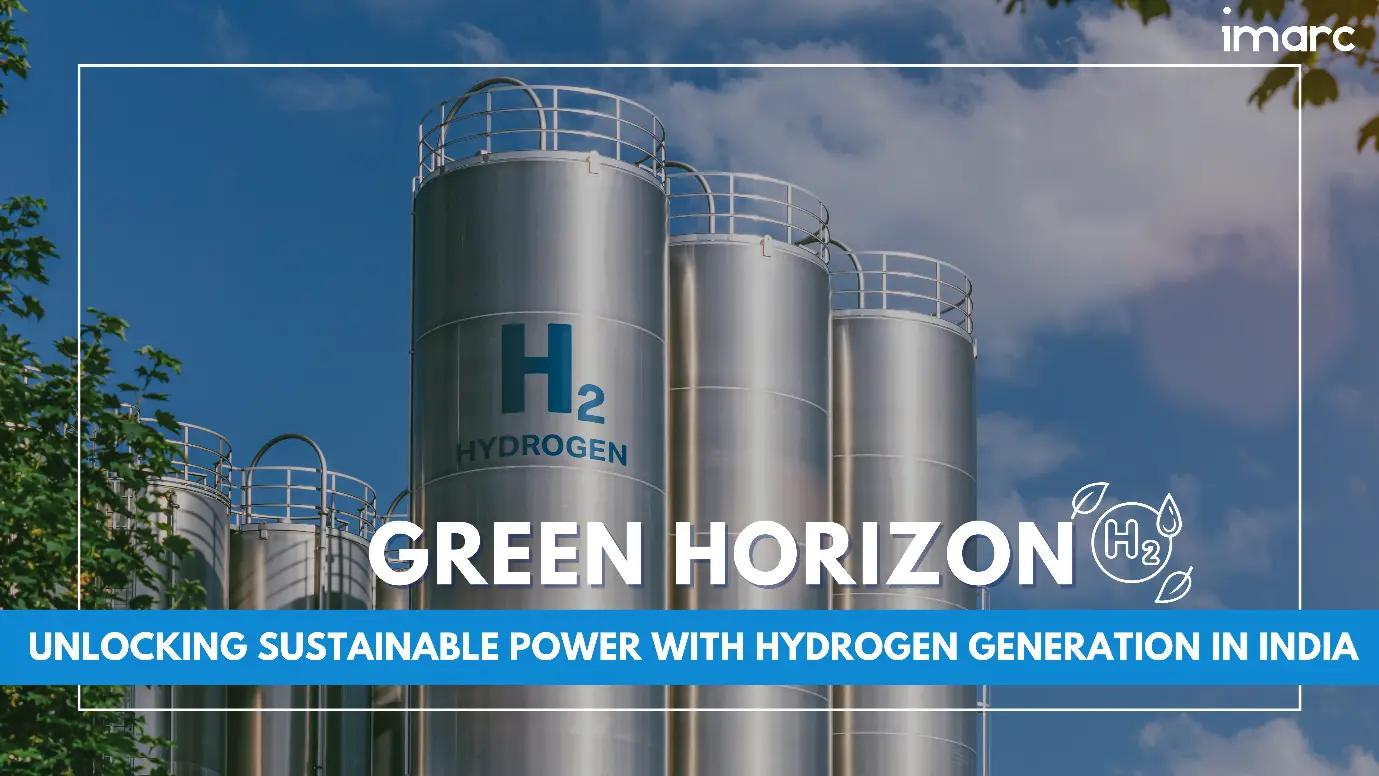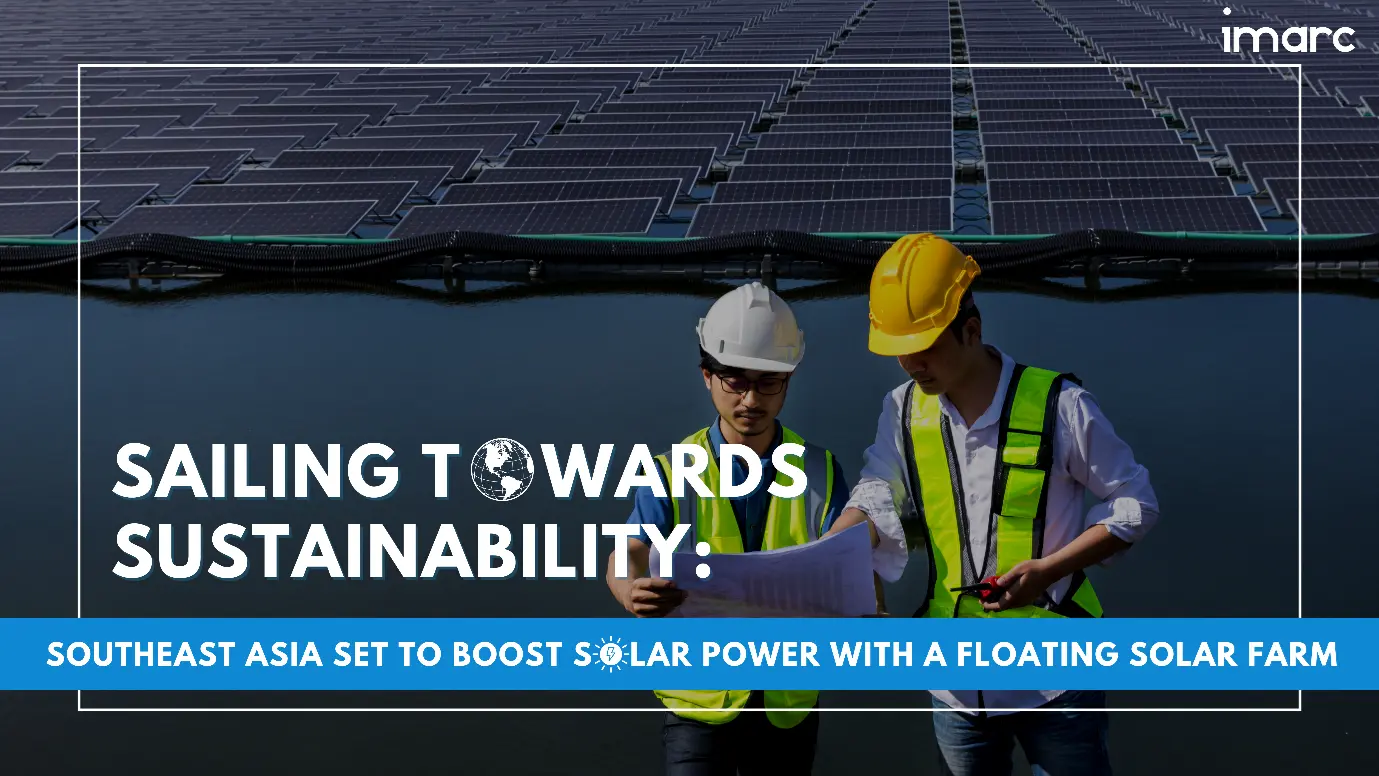India's Ambitious Green Hydrogen Push: A Game Changer for Global Energy
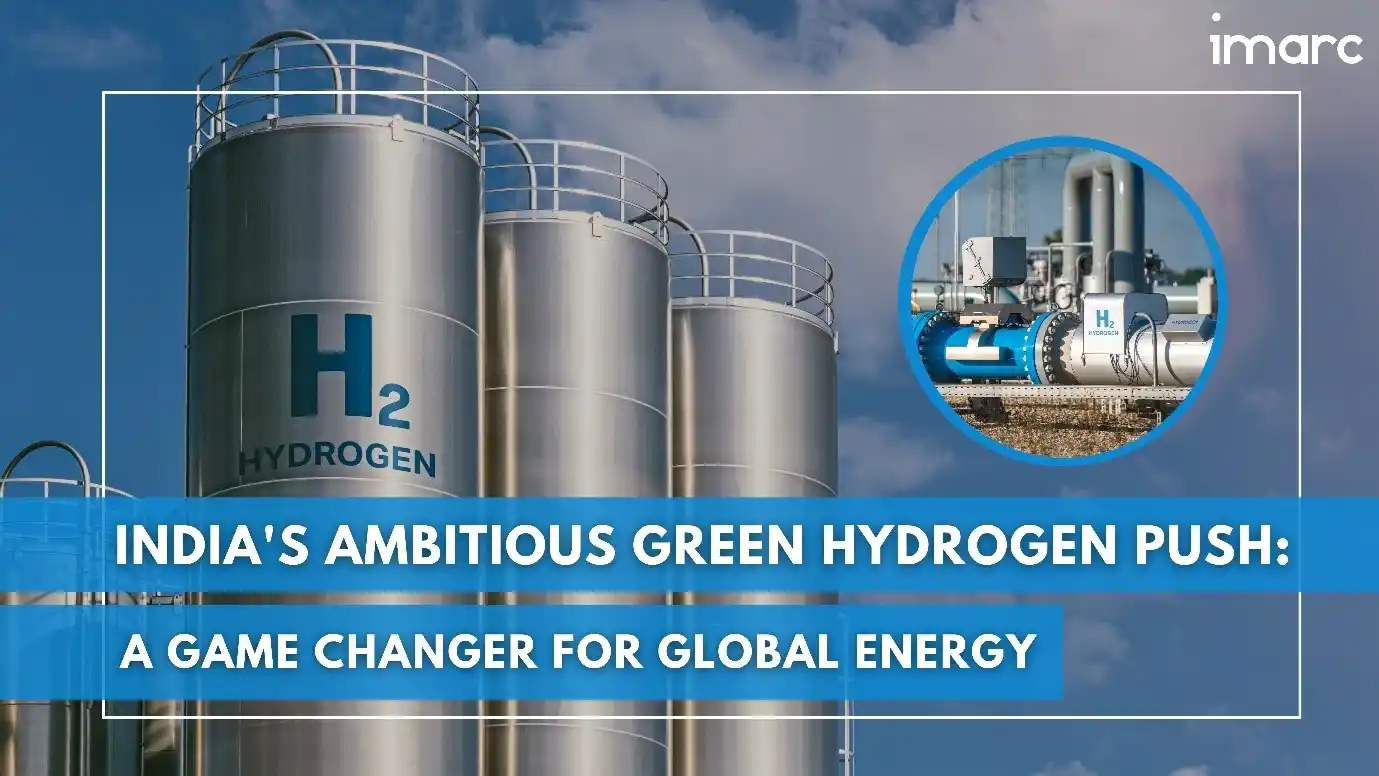
Hydrogen is a clean, renewable, and widely available energy source that can be produced through various methods. Production techniques such as coal gasification, steam methane reforming, electrolysis, and thermochemical processes highlight its versatility. Hydrogen is essential in several critical sectors, including methanol and ammonia production, petroleum refining, transportation, power generation, as well as in electronics, metal industries, and as a rocket propellant. The increasing concern over carbon emissions and greenhouse gases has led to a shift towards cleaner fuel options. Hydrogen is recognized for its cleanliness and versatility as an energy carrier. Additionally, supportive government initiatives and favorable policies are driving the growth of hydrogen production globally.
According to IMARC Group, the global green hydrogen market size reached a value of US$ 1,129.3 Million in 2023. Looking forward, IMARC Group expects the market to exhibit a growth rate (CAGR) of 49.36% during 2024-2032. The market for green hydrogen is driven by various growth factors, such as the rising cost of traditional fuels and the increasing adoption of clean energy sources, making green hydrogen a more economically attractive alternative. Moreover, hydrogen’s role in producing ammonia for fertilizers meets the growing demand driven by food production needs. Additionally, government initiatives, such as India’s National Green Hydrogen Mission, aim to boost hydrogen production and infrastructure, supporting clean energy transitions. These factors collectively enhance hydrogen’s market potential as a key player in sustainable energy solutions. The Indian government is planning to establish the country as a global hub for green hydrogen (GH2) for the production, utilization, and export.
Green Hydrogen in India: The Latest Developments Shaping the Energy Landscape
- In July 2024, the Adani Group revealed that it is planning a US$ 9 Billion investment in green hydrogen projects in Gujarat's Rann of Kutch, with plans to export the green fuel to Europe and several Asian nations. The first phase targets a production capacity of 1 million tonnes per annum (mtpa) of green hydrogen. This initiative aligns with the government’s mission to replace 40% of India's hydrogen consumption with green hydrogen by 2030.
- In June 2024, the World Bank approved a US$ 1.5 billion loan to support India's efforts in advancing low-carbon energy development. The funding will be directed towards fostering a green hydrogen market, boosting electrolyzer production, and expanding renewable energy adoption.
- In May 2024, Gas Authority of India Ltd (GAIL) inaugurated its first green hydrogen plant in Madhya Pradesh. This milestone marked a significant step towards embracing new and alternative energy sources, aligning with the goals of the National Green Hydrogen Mission.
- In March 2024, Jindal Stainless (JSL) initiated the first use of green hydrogen at its stainless-steel facility in Hisar, Haryana. This green hydrogen plant, developed in partnership with Hygenco Green Energies Private Limited, is equipped with state-of-the-art technology and has a production capacity of 350 Nm3/hr. Over a 20-year period, the plant is projected to reduce CO2 emissions by approximately 54,000 tonnes, playing a key role in advancing India’s green energy objectives. Operating under a Build-Own-Operate (BOO) model, the facility also incorporates advanced monitoring systems to ensure the efficient production of hydrogen and optimal use of renewable energy.
- In February 2024, Haryana-based green hydrogen company Hygenco announced plans to set up and operate a fully green hydrogen plant in Maharashtra. Additionally, Hygenco entered a strategic partnership with Sterlite Technologies Ltd (STL), a global leader in optical and digital solutions, to supply both green hydrogen and green oxygen.
Case Study: Green Hydrogen Cost Model Analysis
Objective: One of our clients reached out to us to conduct a feasibility study for setting up a green hydrogen manufacturing plant. We developed a comprehensive financial model for the setup and operation of a green hydrogen manufacturing plant in India. The proposed facility was designed with an annual production capacity of 300 tons/year, housed within a 7,500 square meter area.
Manufacturing Process: The manufacturing process of green hydrogen using proton exchange membrane (PEM) electrolysis involves several key steps. First, renewable energy sources like wind, solar, or hydropower generate electricity to power the PEM electrolyzer. Pure, deionized water is then fed into the electrolyzer, where it undergoes an electrochemical reaction to split into hydrogen and oxygen gases. The PEM within the electrolyzer facilitates the movement of protons and prevents gas mixing, ensuring high-purity hydrogen. The produced gases are collected separately, with hydrogen being purified and compressed or liquefied for storage and distribution. This hydrogen can then be used in fuel cells, industrial processes, or energy storage systems, with proper infrastructure ensuring its safety and efficiency throughout its lifecycle.
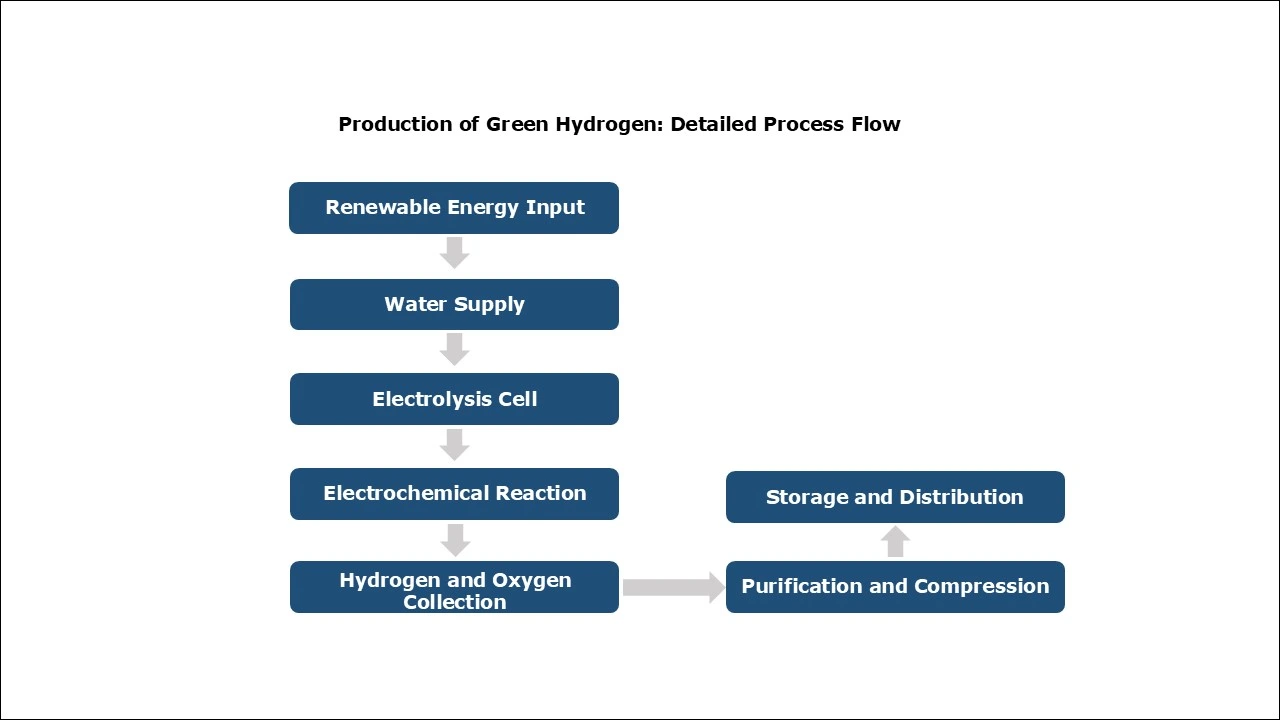
Mass Balance and Raw Material Required: The major raw materials used in the green hydrogen manufacturing plant are water and electricity. For a plant producing around 1 ton of green hydrogen, around 15 tons of water and 50,000 kWh of electricity are required.
Table: Mass Balance: Raw Materials Required for Production of 1 ton of Green Hydrogen
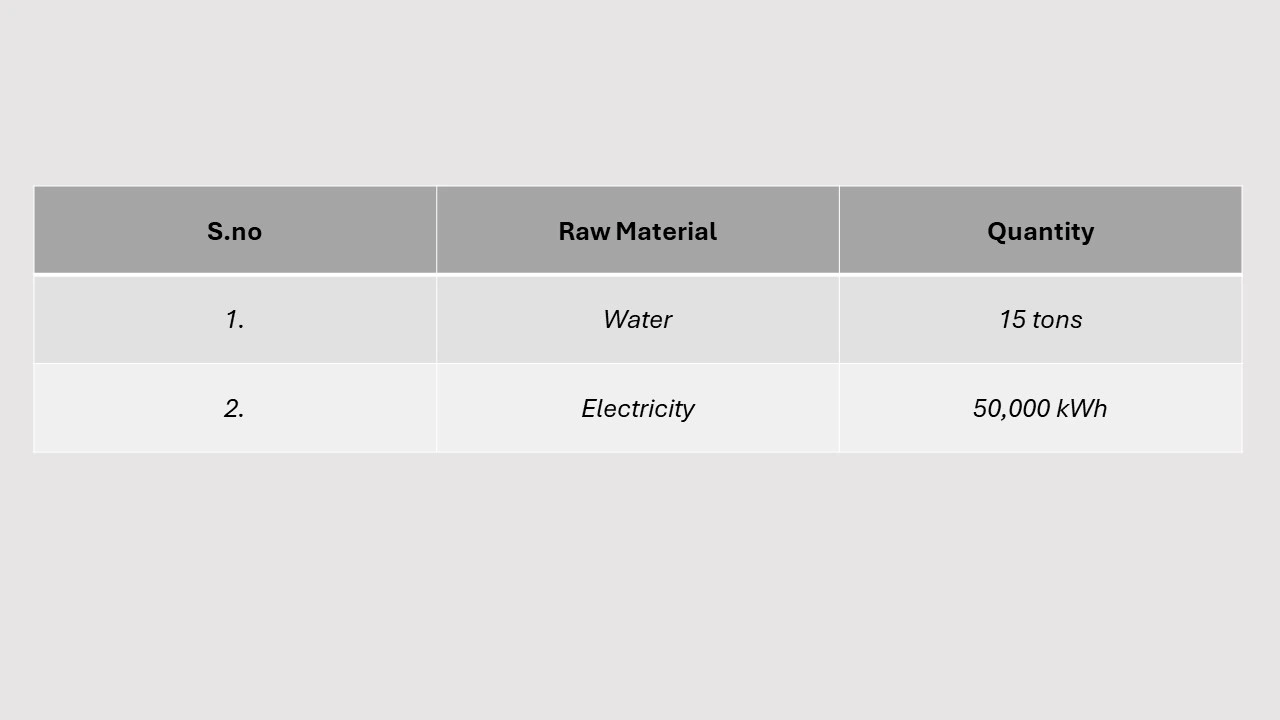
List of Machinery:
The following equipment was required for the proposed plant:
- Control System
- Electrolyte Power Supply
- Supporting Power Supply Device
- Electrolyser
- Purification
- Online Oxygen in Hydrogen Analyzer
- Online Hydrogen in Oxygen Detector
- Online Dew Point Met
- Online Hydrogen Leakage Detector
- Portable Hydrogen Leak Detector
- Portable Dew Point Meter
- Di Water Unit
- Installation Auxiliary Materials
Techno-Commercial Parameter:
- Breakup by Capital Investment: The total capital cost for establishing the proposed plant is approximately US$ 4.6 Million. Machinery costs comprise 89.8% of the total capital costs for the green hydrogen production plant. The civil works include site preparation, foundation construction, and building infrastructure to support electrolysis and other processes. The land designated for the green hydrogen manufacturing plant must comply with the standards set by the relevant authorities.
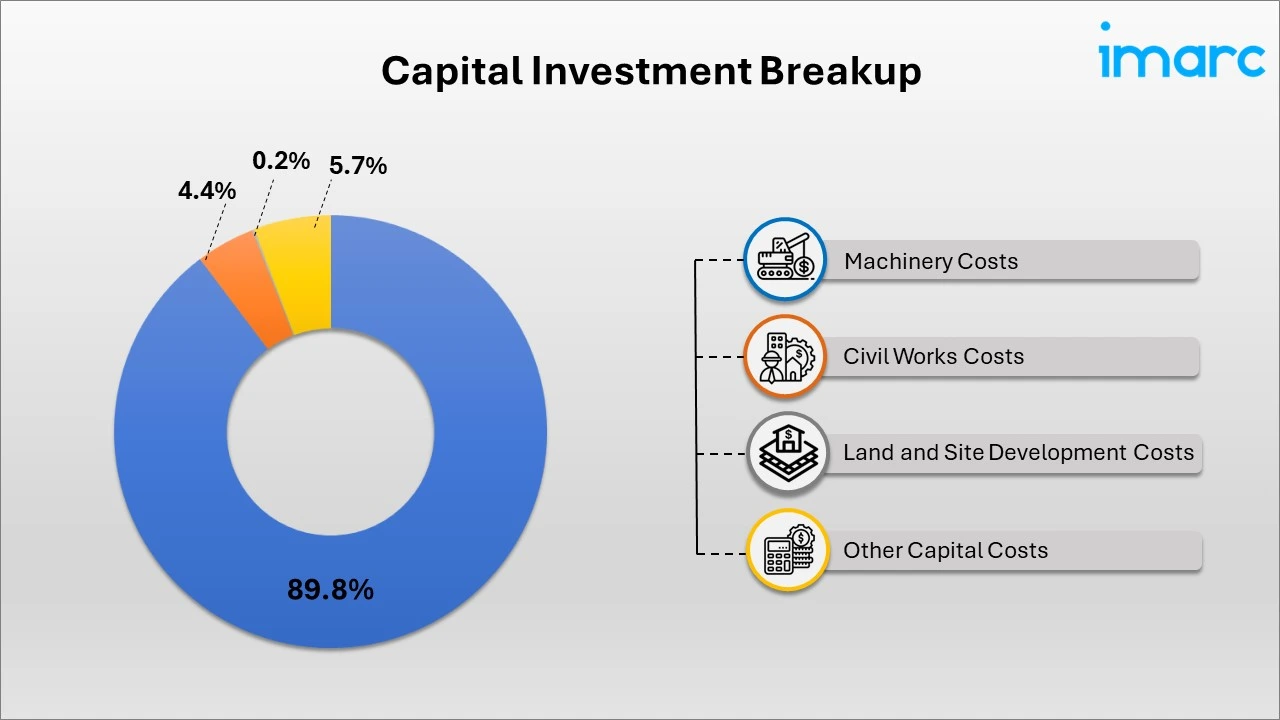
- Breakup by Expenditure: Raw materials account for the largest share of total expenditures, at 58.5%. This is followed by salaries and wages, depreciation of plant and machinery, installment payments and interest payments, packaging, overheads, and various other expenses. Other expenses include transportation charges, utility costs, repair and maintenance, depreciation of civil works, depreciation of miscellaneous fixed assets, and other costs.
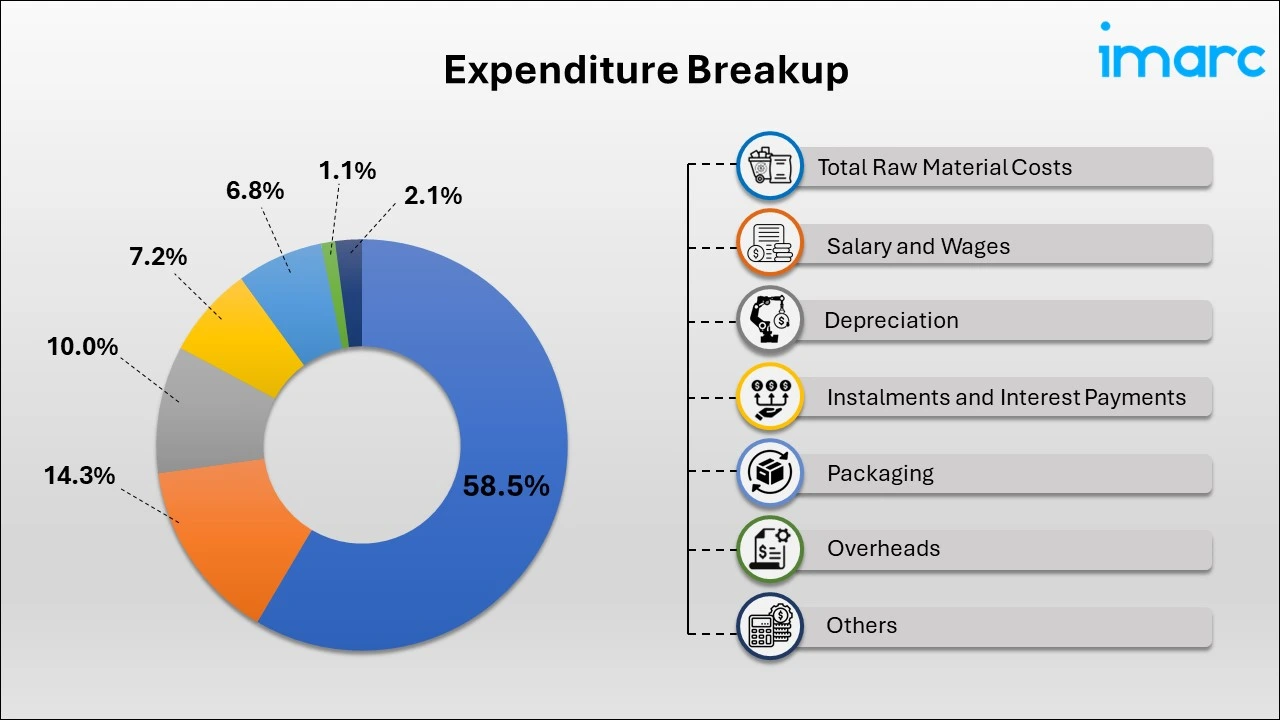
- Profitability Analysis Year on Year Basis
(All values are in US$ thousands, except % ages)
.webp)
Conclusion
Our financial model for the green hydrogen production plant was meticulously developed to meet the client’s objectives, providing an in-depth analysis of production costs, including raw materials, manufacturing, capital expenditure, and operational expenses. By addressing the specific requirements of producing 300 tons green hydrogen annually, we successfully identified key cost drivers and projected profitability, considering market trends, inflation, and potential fluctuations in raw material prices. This comprehensive financial model equipped the client with valuable insights for strategic decision-making, demonstrating our commitment to delivering high-quality, client-focused solutions that ensure the long-term success of large-scale manufacturing ventures.
IMARC's Financial Model Expertise: Helping Our Clients Explore Industry Economics
IMARC is a global market research company that offers a wide range of services, including market entry and expansion, opportunity assessment, competitive intelligence and benchmarking, procurement research, pricing and cost research, regulatory approvals and licensing, factory setup, factory auditing, company incorporation, incubation services, recruitment services, and marketing and sales.
Under our factory setup services, we assist our clients in exploring the feasibility of their plants by providing comprehensive financial modeling. Additionally, we offer end-to-end consultation for setting up a plant in India or abroad. Our financial modeling includes an analysis of capital expenditure (CapEx) required to establish the manufacturing facility, covering costs such as land acquisition, building infrastructure, purchasing high-tech production equipment, and installation. Furthermore, the layout and design of the factory significantly influence operational efficiency, energy consumption, and labor productivity, all of which impact long-term operational expenditure (OpEx). So, every parameter is covered in the analysis.
At IMARC, we leverage our comprehensive market research expertise to support companies in every aspect of their business journey, from market entry and expansion to operational efficiency and innovation. By integrating our factory setup services with our deep knowledge of industry dynamics, we empower our clients to not only establish manufacturing facilities but also strategically position themselves in highly competitive markets. Our financial modeling and end-to-end consultation services ensure that clients can explore the feasibility of their plant setups while also gaining insights into competitors' strategies, technological advancements, and regulatory landscapes. This holistic approach enables our clients to make informed decisions, optimize their operations, and align with sustainable practices, ultimately driving long-term success and growth.
Contact Us
Have a question or need assistance? Please complete the form with your inquiry or reach out by emailing us on sales@imarcgroup.com.
